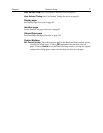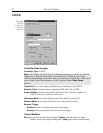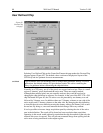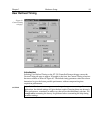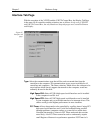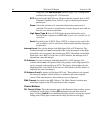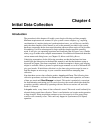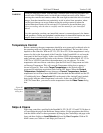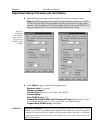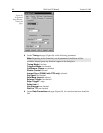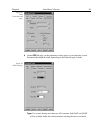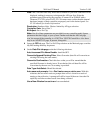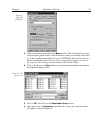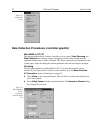
85
Chapter 4
Initial Data Collection
Introduction
The procedure in this chapter will enable you to begin collecting real data promptly.
Minimum requirements are assumed. If your system is more complex, e.g., requiring
consideration of complex timing and synchronization issues, you will have to carefully
study the other chapters of this manual as well as the manuals provided for the system
hardware components before data acquisition that addresses those needs will be possible.
Nevertheless, it will be advantageous to begin with the simplest possible operating
mode. It will give you operating experience and familiarity that will prove very valuable
when you go to make more complex measurements. For additional information about the
various menus and dialog boxes, see Chapter 15, Menus and Dialog Boxes.
Underlying assumptions for the following procedure are that the hardware has been
installed per the instructions in the hardware manual(s) and that the hardware setup as
discussed in Chapter 3 has been completed. A further assumption is that a good imaging
subject is available. Often, a picture or optical target mounted on a wall or lab bench will
give good results. If initial data collection is to be done using a microscope, be sure to
read the chapter on microscopy in your controller manual before attempting data
collection.
Note that there are two data collection modes,
Acquire
and
Focus
. The following data
collection procedures are done in the
Focus
mode. In
Focus
mode operation, no frames
of data are stored until
Start Storage
is selected. This mode is particularly convenient
for familiarization and setting up. For ease in focusing, the screen refresh rate should be
as rapid as possible, achieved by operating with axes and cross-sections off, and with
Zoom 1:1 selected.
In
Acquire
mode, every frame of data collected is stored. This mode would ordinarily be
selected during actual data collection. There is one limitation on Acquire mode operation
to keep in mind. If data acquisition continues at too fast a rate for it to be stored, data
overflow will eventually occur. This could only happen in Synchronous (Full Speed)
operation.



